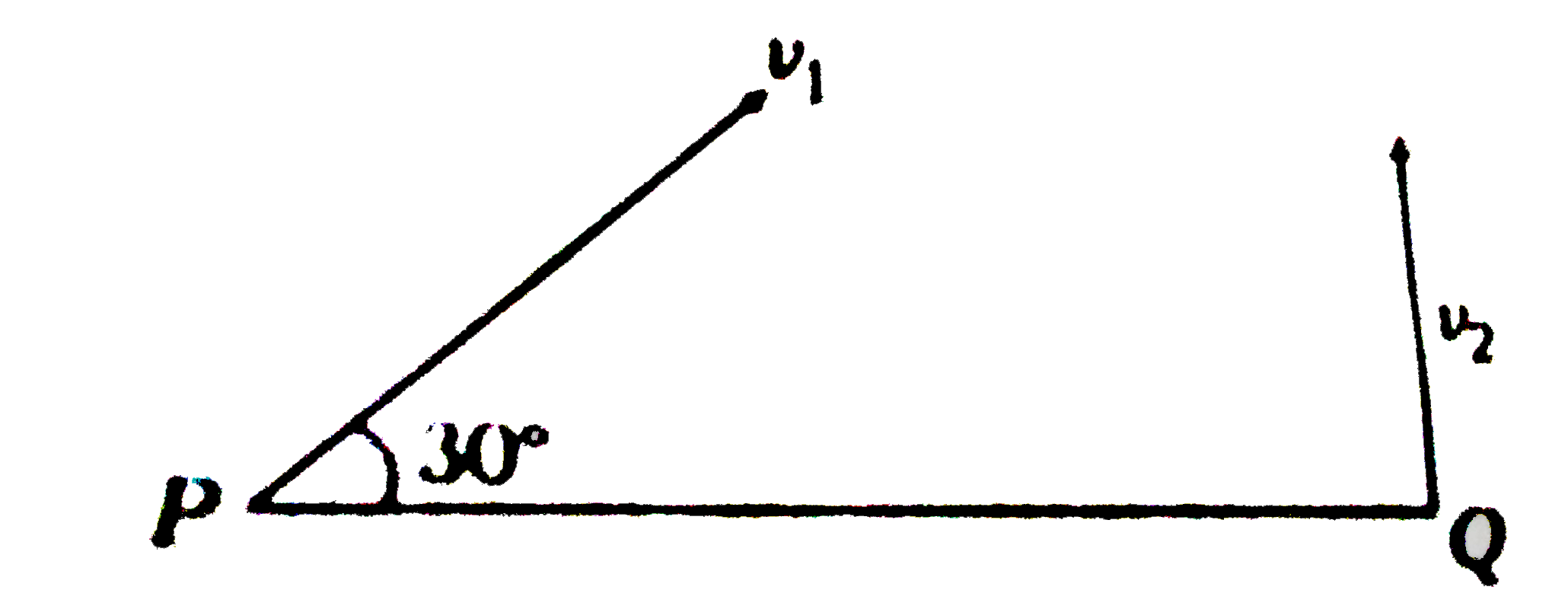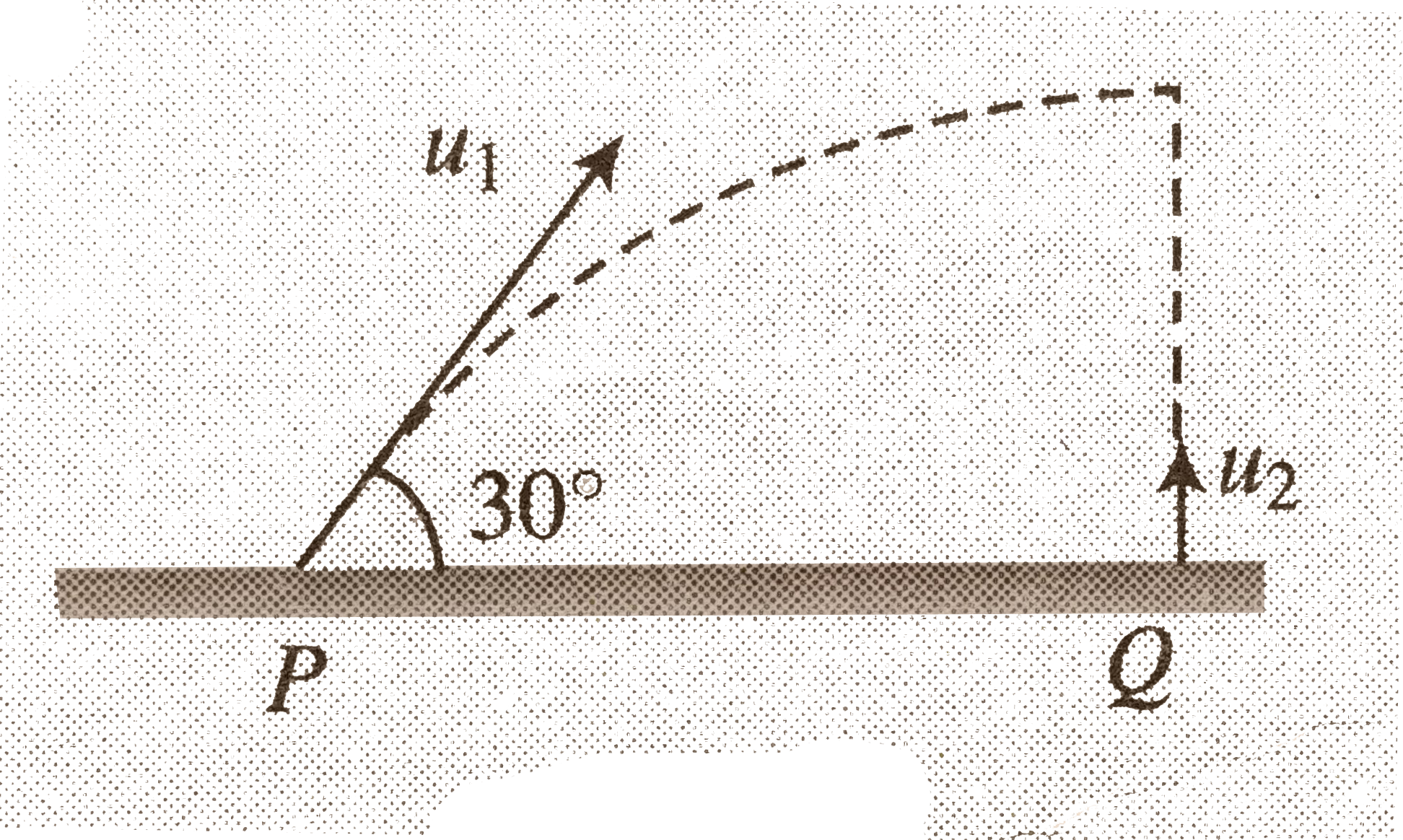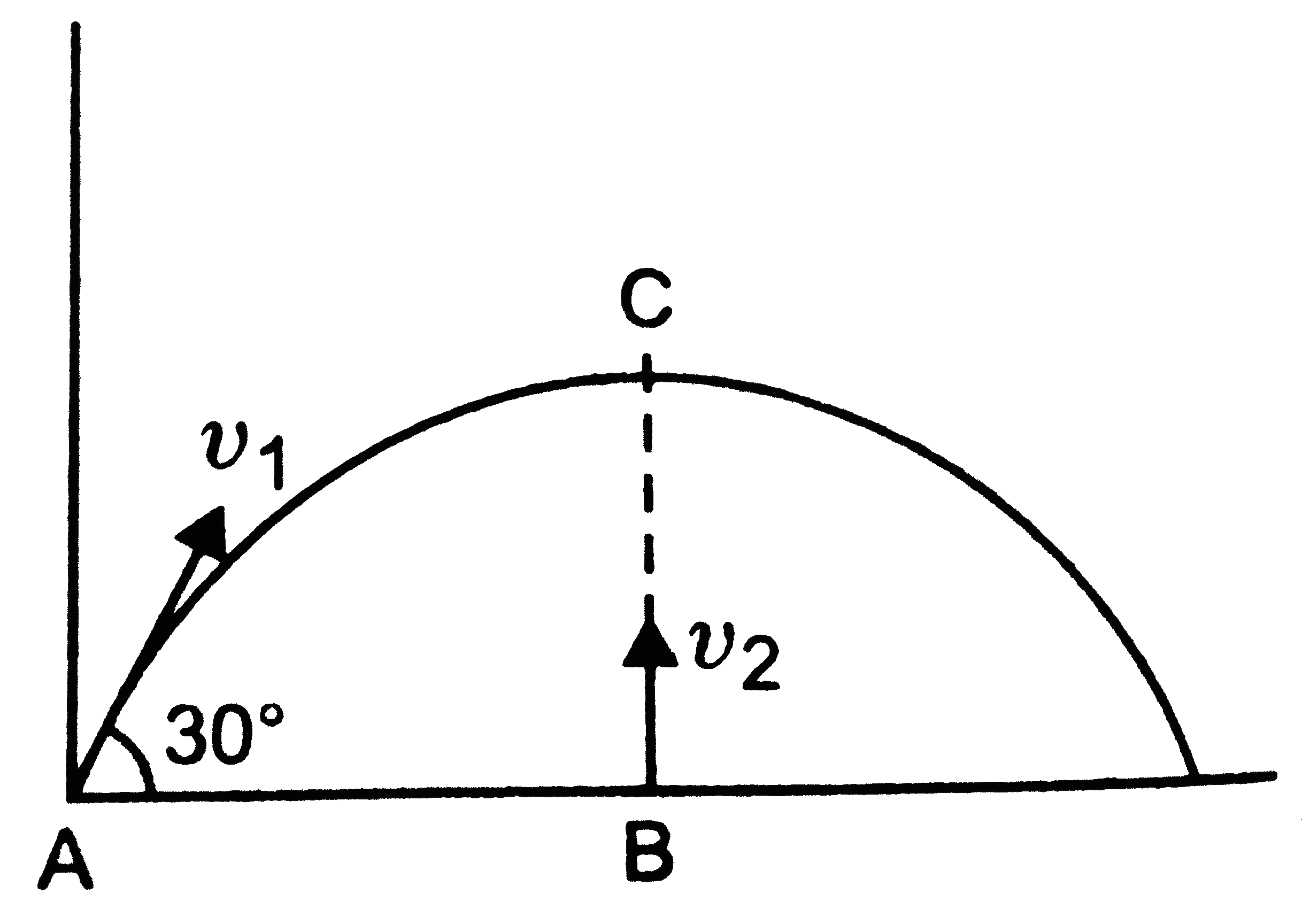A projectile A is thrown at an angle of 30∘ to the horizontal from point P. At the same time, another projectile B is thrown with velocity v2 upwards from the point Q vertically below the highest point. For B to collide with A, v2v1 should be

1
2
12
4
The correct Answer is:C
This happen when vertical velocity of both are same.
∴v2=v1sin30∘ or v2v1=12
Topper's Solved these Questions
- BOOK - DISHA PUBLICATIONCHAPTER - MOTION IN A PLANE EXERCISE - Exercise -1 : CONCEPT BUILDER (TOPICWISE)60videos
MOTION IN A PLANE
- BOOK - DISHA PUBLICATIONCHAPTER - MECHANICAL PROPERTIES OF FLUIDS EXERCISE - EXERCISE-2 CONCEPT APPLICATOR24videos
MECHANICAL PROPERTIES OF FLUIDS
- BOOK - DISHA PUBLICATIONCHAPTER - MOTION IN A STRAIGHT LINEEXERCISE - Exercise-230videos
MOTION IN A STRAIGHT LINE
Similar Questions
A projectile A is thrown at an angle 30∘ to the horizontal from point P. At the same time, another projectile B is thrown with velocity v2 upwards from the point Q vertically below the highest point A would reach. For B to collide with A the ratio v2v1 should be
 View Solution
View SolutionA particle P is projected with velocity u1 at an angle of 30∘ with the horizontal. Another particle Q is thrown vertically upwards with velocity u2 from a point vertically below the highest point of path of P. Determine the necessary condition for the two particles to collide at the highest point.
 .View Solution
.View Solution
Knowledge Check
- Question 1 - Select One
A projectile A is thrown at an angle 30∘ to the horizontal from point P. At the same time, another projectile B is thrown with velocity v2 upwards from the point Q vertically below the highest point A would reach. For B to collide with A the ratio v2v1 should be
 A√32B2C12D2√3
A√32B2C12D2√3 - Question 2 - Select One
A body si projected with velocity v1 (A), At the same time , another body is projected vetically upwards from (B) with velocity v2. The point (B) lies vetically below the highestpoint Fig. 2 (CF).29. For bothe the bodies to colled v2/v1 should be
 .A0.5B1C√3/2D2/√3
.A0.5B1C√3/2D2/√3 - Question 3 - Select One
A particle A is projected with speed VA from a point making an angle 60∘ with the horizontal. At the same instant, a second particle B is thrown vertically upwards from a point directly below the maximum height point of parabolic path of A, with velocity VB . If the two particles collide then the ratio of VA/VB should be:
A1B2/√3C√3/2D√3
A particle P is projected with velocity u1 at an angle of 30∘ with the horizontal. Another particle Q is thrown vertically upwards with velocity u2 from a point vertically below the highest point of path of P. Determine the necessary condition for the two particles to collide at the highest point.
 .View Solution
.View SolutionA particle A is projected with speed VA from a point making an angle 60∘ with the horizontal. At the same instant, a second particle B is thrown vertically upwards from a point directly below the maximum height point of parabolic path of A, with velocity VB . If the two particles collide then the ratio of VA/VB should be:
View SolutionTwo projectiles thrown from the same point at angles 60∘and30∘ with the horizontal attain the same height. The ratio of their initial velocities is
View SolutionA particle A is projected with speed vA from a point making an angle 60∘ with the horizontal. At the same instant, a second particle B is thrown vertically upwards from a point directly below the maximum hieght point of parabolic path of A with velocity vB. If the two particles collide then the ratio of vA/vB should be
View SolutionTwo projectiles thrown from the same point at angles 60∘and30∘ with the horizontal attain the same height. The ratio of their initial velocities is
View Solution

